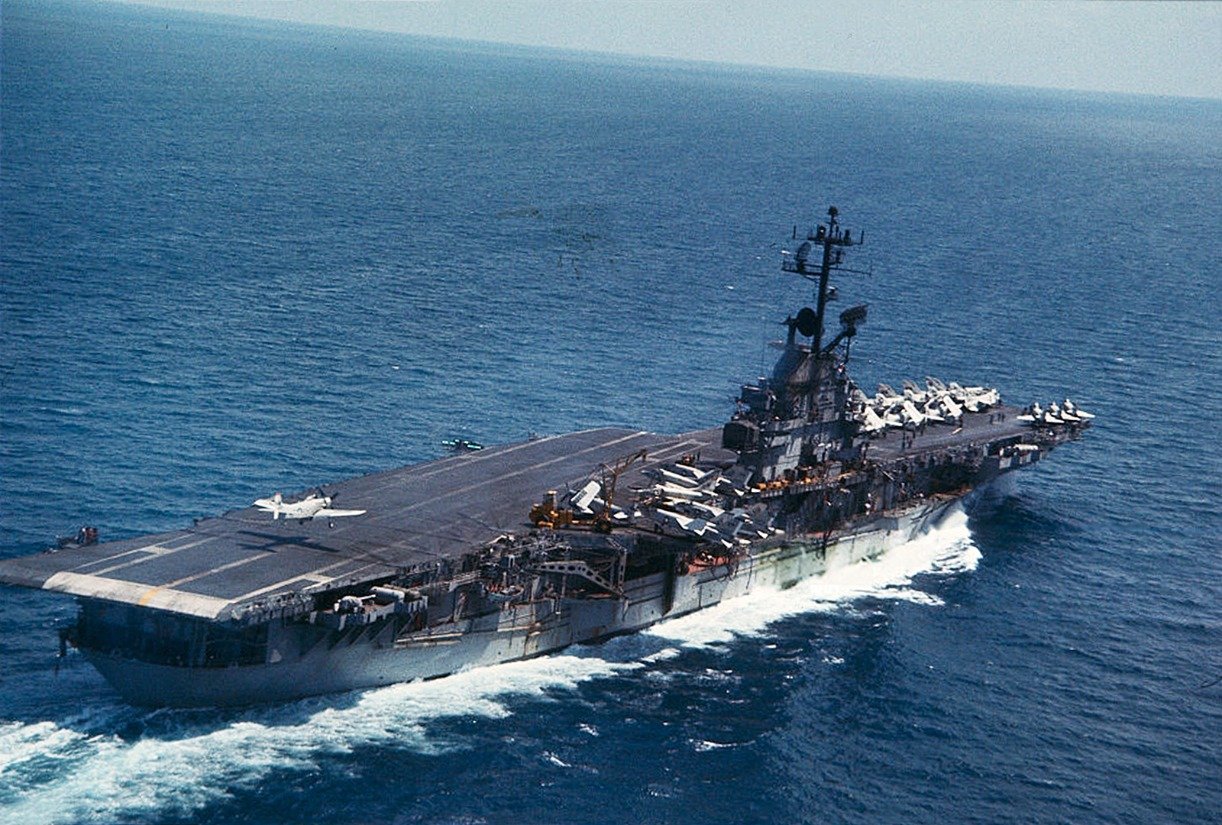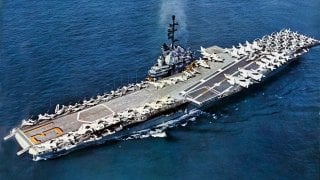Essex-Class Aircraft Carrier USS Bon Homme Richard Rose from the Dead
The aircraft carrier USS Bon Homme Richard became the second Naval ship to honor John Paul Jones’s famous Revolutionary War frigate when introduced during the Second World War. The Essex-class aircraft carrier was the last in its class to be completed in time to serve in the final days of the war.
The aircraft carrier USS Bon Homme Richard became the second Naval ship to honor John Paul Jones’s famous Revolutionary War frigate when introduced during the Second World War. The Essex-class aircraft carrier was the last in its class to be completed in time to serve in the final days of the war.
Although the ship was decommissioned in the late 1940s, she later underwent a modernization overhaul that resulted in her reentry to service. CV/CVA-31 would participate mightily in both the Korean War and Vietnam War.
Introducing the Bon Homme Richard:
Like her sister-ships, USS Bon Homme Richard was designed following the Japanese and Italian repudiation of the Washington Naval Treaty.
Also known as the Five-Power Treaty, the agreement was signed among the major Allies of WWI to prevent an arms race by placing limitations on naval construction.
Once these guidelines were sidestepped, however, all signatories began to pursue a naval arms race. For this reason, the Essex-class ships were constructed wider and longer than its predecessors.
In fact, the Essex carriers weighed nearly a third more than the earlier Yorktown-class ships.
One enhancement fitted onto USS Bon Homme and her sister ships was a portside deck-edge elevator. Other improvements were made to the carriers’ armor protection, ventilation systems and lighting systems. USS Bone Homme could carry 36 fighters, 36 dive bombers, and 18 torpedo bombers on its flight deck. The rise of aerial power during the war made this attribute even more significant at the time.
Operational history: Unretired to fight again
Bon Homme Richard was laid down in February 1943 at the New York Navy Yard. She uniquely was the first of her class to be constructed at this particular Navy Yard.
By 1944, the carrier launched and quickly joined the war effort.
Initially, she was deployed with the 3rd Fleet during air strikes against Japan, where she remained until 1946. At this time, she underwent conversion for troop transport duty and finished out the war, making trans-Pacific voyages to return servicemen back to the states.
Although Bon Homme Richard was decommissioned in the late 1940s, the launch of the Korean War brought her back to service. She was reclassified as an attack carrier and immediately participated in an amphibious feint at Kojo.
In 1953, Bon Home Richard was again decommissioned to undergo additional modernization. The carrier was fitted with an angled and strengthened flight deck, enlarged elevators, enclosed bow and steam catapults. Following this overhaul, she made several tours of the western Pacific.

The Vietnam War marked the third armed conflict that Bon Homme Richard participated in. Aircraft launched from this carrier battled North Vietnam’s Russian-made MiG fighter jets on many occasions. In 1971, the Bon Homme Richard was decommissioned.
However, it took nearly two decades for the ship to be scrapped at Southwest Marine’s Yard in San Pedro, California. For her service record, the carrier received on battle star for WWII and five for the Korean War.
About the Author: Maya Carlin
Maya Carlin, National Security Writer with The National Interest, is an analyst with the Center for Security Policy and a former Anna Sobol Levy Fellow at IDC Herzliya in Israel. She has by-lines in many publications, including The National Interest, Jerusalem Post, and Times of Israel. You can follow her on Twitter: @MayaCarlin.


